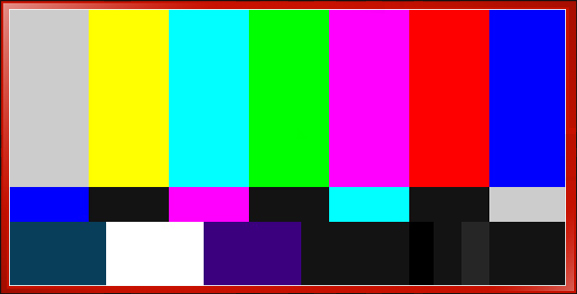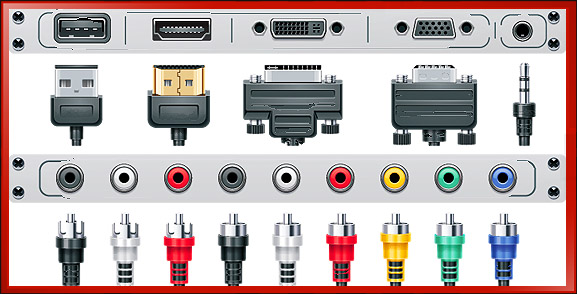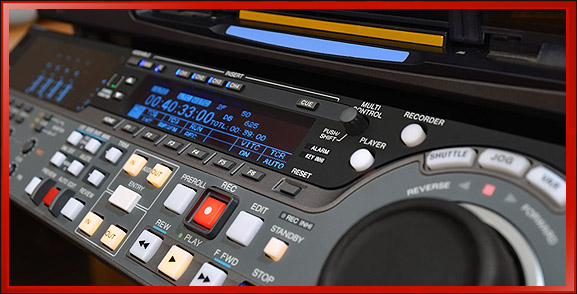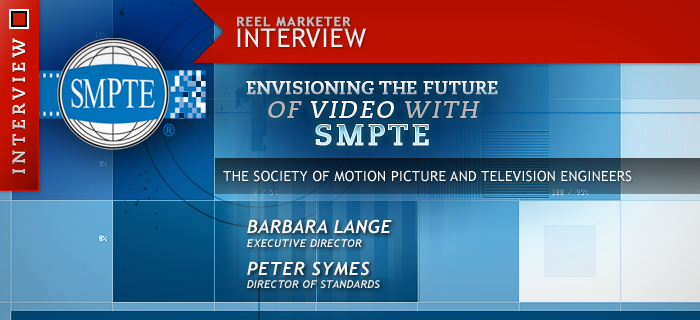Great to be sitting down with you! For those who've not heard about your initiatives yet, tell us what you do?
SMPTE: As Executive Director of SMPTE, I am responsible for running the Society and fulfilling the strategic vision set forth by the Board of Governors. (Barbara Lange).
And, as Director of Standards and Engineering, I and my team provide the infrastructure and resources for the many groups that make up the standards committees, and the publication of all the engineering documents. (Peter Symes)
What does S.M.P.T.E. stand for?
SMPTE: The Society of Motion Picture and Television Engineers! Quite a mouth-full.
SMPTE has a fascintiating history that pre-dates the world wars! How did SMPTE come to be, and what role does SMPTE play today?
SMPTE: In the early 1900's, the soon-to-be motion picture industry was unorganized, lacking structure and leadership. Equipment was built differently according to each manufacturer, and standard practice was nonexistent.
 At the same time, a world war was threatening, and the army saw a need for motion pictures for training and recording military events. The U.S. government attempted to bring order to this demanded industry by creating a body to lead development in motion pictures. The government looked to an inventor from Washington D.C. named C.F. Jenkins to chair the organization. Jenkins had developed the first motion picture projector in 1895 along with Thomas Armat, as well as several unique imaging devices, such as an underwater camera, and a panoramic camera for aerial views.
At the same time, a world war was threatening, and the army saw a need for motion pictures for training and recording military events. The U.S. government attempted to bring order to this demanded industry by creating a body to lead development in motion pictures. The government looked to an inventor from Washington D.C. named C.F. Jenkins to chair the organization. Jenkins had developed the first motion picture projector in 1895 along with Thomas Armat, as well as several unique imaging devices, such as an underwater camera, and a panoramic camera for aerial views.
The “T” was added to the Society in 1950 to embrace the emerging television industry.
Today, SMPTE is recognized as the global leader in the development of standards and authoritative practices for film, television, video and multimedia.
To accomplish its educational goals, SMPTE organizes annual conferences and seminars. It also publishes the highly regarded SMPTE Journal, which is recognized around the world for its well-researched technical papers, tutorials, practical application articles, standards updates and SMPTE Section Reports!

What are some important initiatives or standards that SMPTE is behind?
SMPTE: Well, there are over 600 standards, engineering guidelines and recommended practices, which SMPTE has published over the years. A few of the most prominent are:
- SMPTE Timecode, a form of media metadata without which modern videotape editing would not be possible, is added to video or audio material to provide a time reference for editing, synchronization and identification. Although primarily for video, timecode has also been adapted to synchronize music, lighting changes, effects, etc..
- The SMPTE color bars are a type of television screen test pattern, and is most commonly used in countries where the NTSC video standard is dominant, such as those in North America. The Society of Motion Picture and Television Engineers (SMPTE) refers to this test pattern as Engineering Guideline EG 1-1990. The components of this pattern are a known standard, so comparing this pattern as received to that known standard gives video engineers an indication how an NTSC video signal has been altered by recording or transmission, and thus what compensation needs to be applied to that signal to bring it back to original condition. The pattern is also used for setting a television monitor or receiver to reproduce NTSC chrominance and luminance information correctly!
- SMPTE Timed Text (SMPTE-TT) is a declarative XML-based application of W3C TTML created by SMPTE. SMPTE-TT can be used in modern studio workflows to deliver new high-resolution captions or subtitle data over IP networks with improved presentation features. It is critical for delivering captions for video content delivered over the Internet, thereby providing enriched content for the hearing impaired.
Without SMPTE as we know it, what issues would broadcasters and manufactures potentially face?
SMPTE: As a standards developing organization, SMPTE’s work facilitates interoperability between systems, thus enabling manufacturers to focus development on feature enhancements rather than format issues, and ensures broadcasters do not have to rely on closed, proprietary systems, thus reducing reliance on one particular vendor.
Why isn’t video as simple as recording and playback? Please list and briefly explain– what are some technical aspects are important for video broadcast?
 Some things are fundamental—getting the right blacks and whites is just the same as exposing film correctly. Crushed whites and detail-free shadows are generally ugly, whether on video or film (although film is generally more tolerant).
Some things are fundamental—getting the right blacks and whites is just the same as exposing film correctly. Crushed whites and detail-free shadows are generally ugly, whether on video or film (although film is generally more tolerant).
But most of the complexities are a result of continually changing technology. It’s not all that many years ago that 30-line television was referred to as “high definition!” Many different techniques and inventions have been applied over the years to keep television on the leading edge.
For example, interlace was a brilliant solution in its day—it allowed a combination of resolution and flicker rate that would have otherwise been impossible. But in these days of digital compression systems such as the MPEG family of standards, interlace presents considerable difficulties, and handling it adds enormous complexity to the compression systems.
What are some aspects are important for audio broadcast?
SMPTE: Everything is important for audio! Sometimes it does not get as much attention as the video, and that’s always a mistake. Generally speaking, a poor picture with great sound is much more acceptable that great video with poor sound. And good sound can be a lot more difficult, and require more skill, than good video.
Why is GOOD audio, sound and video so important to have standards – even for online?
SMPTE: Many reasons!
Good standards make life much easier. The creator knows what his audience expects; the audience knows what they expect to receive. The focus can go on the content, not technology problems.
Standards lead to cheaper equipment because manufacturers and software developers don’t have to reinvent the wheel each time they design a new product.

More choices – if equipment and software tools conform to standards, users can mix and match.
Standards lead to better implementations. For example, MPEG-4 encoders and decoders are better because developments build on each other towards a common goal.
What issues are presented by the ubiquity of low-cost production gear and the lack of training allowing anyone to produce video?
SMPTE: It’s a bit like the early days of desktop publishing. Accessibility to everyone means that a lot bad content will be produced. But, more importantly, opportunity is there for everyone—talent need not be lost because of cost barriers.
What are the top tips you would give an online-only content producer creating video?
SMPTE: Story, story, short, simple, story!
For the newbie who will DIY (do-it-yourself) should one learn or get trained?
SMPTE: Yes, yes, yes! Yes, join SMPTE; great information online and in the Journal; network with the experts. Yes, get some training if available to you. Learning from others is always good, even if you decide to reject some of the advice. Yes, read—books, magazines, etc.—but be critical and selective. Join a local video club—peer review may sometimes be uncomfortable, but it’s a great way to learn.
What are some future projects that SMPTE is working on?
SMPTE: UHDTV, which I'll touch on later, advances in 3D movies, including higher frame rates, software services, XML-based messaging systems, etc., etc. Also, online standards for video are a combination of format standards (SMPTE), compression standards (MPEG, SMPTE, and others), and Internet standards (W3C, IETF, etc.) Also, see SMPTE-TT as touched on earlier.We're busy, and defining the future's cutting edge!

What’s the next ‘HD’ standard – Ultra-High Definition?
SMPTE: Yes – and SMPTE has already created standards for 2160- and 4320-line standards. (Similar to 2K and 4K video.) Some of these may be well in advance of consumer standards, but they provide common ground for all those working on future video systems. The future holds a lot of new developments – stay tuned, or get involved too!
What are the best ways to learn more about SMPTE, and get involved?
SMPTE: Follow us on Twitter at @smpteconnect and visit our website at www.smpte.org for more information about our services and programs! Thanks for featuring us on Reel Designer and sharing what we do with your audience!






Looking forward to 4K on prosumer cameras one day! Does anyone at SMPTE have a stance on the H.265 video and licensing of the codec? How would that affect producers – would we have to pay each time we encoded a video on our workstations for the web, or what? Thanks!